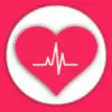Used Pediatric Critical Events Checklist for iOS?
Developer’s Description
Used Pediatric Critical Events Checklist for iOS?
Explore More

Electron Wheel
Free
My Heart Rate Monitor & Pulse Rate - Activity Log for Cardiograph, Pulso, and Health Monitor
FreeEinstein II
Free
NB TotalFit for iPhone
Free
Cycle Companion Lite
Free
Speak Better - Pacing Therapy for Stuttering, Cluttering, Disfluency, Parkinson's Disease, TBI, Stroke, and Fluency Disorders
FreeRelax Yoga Music P: Relaxing Sounds Studio
PaidRunning Log
Paid
Sober House
Free
granny
Free
Health Hub
Free
New Zealand Fitness
Free